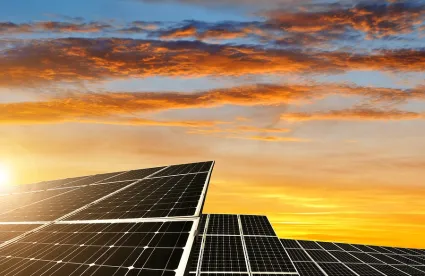The US-China trade war has caused a significant impact on the solar industry, and that impact is expected to grow. In this webinar, learn how solar industry leaders are handling the effects of the US–China trade war and how they are preparing for the future.
Our first webinar of this series featured McDermott Will & Emery partner Carl Fleming, Pine Gate Renewables Director of Regulatory Affairs Brett White, Vice President of Construction James Froelicher and Assistant General Counsel Jess Cheney.
Below are key takeaways from the webinar:
-
Withholding Release Order.
The US Customs and Border Protection (CBP) issued a withholding release order (WRO) against Hoshine Silicon Industry Co. Ltd., a company located in China’s Xinjiang Uyghur Autonomous Region wherein all silica-based products made by Hoshine and its subsidiaries are to be detained at all US ports of entry. Because of this WRO, manufacturers have been moving outside of the Xinjiang Uyghur Autonomous Region in order to avoid being subject to it.
There have been numerous detentions of silica-based products at multiple ports across the United States, and it is expected that the detention of materials will continue. In order to combat this, suppliers and industry leaders are presenting documentation to show that the materials are not being produced from forced labor or Hoshine and its subsidiaries.
Although the WRO was expected to cause significant disruption, it is not having as large of an impact as feared because many suppliers had already left the Xinjiang Uyghur Autonomous Region.
-
Anti-Dumping and Countervailing Petition.
Anti-Dumping and Countervailing Petitions filed in August 2021 requested that the US Department of Commerce (DOC) include additional tariffs against solar panel imports from Malaysia, Thailand and Vietnam. The petitioners requested additional tariffs ranging from 50% – 250%. The DOC has yet to decide whether to investigate based on the petition, however, the impacts of the petition are already being felt with disruptions to the supply chain. If the DOC were to investigate, the solar industry would likely see a severe slowing of projects in 2022 and 2023 as neither suppliers nor developers are willing to bear the economic risk of the potential tariffs.
-
The DOC and the Biden Administration.
The DOC and the Biden administration are expected to make decisions regarding tariffs, as well as anti-dumping and countervailing duties, that will directly affect the solar materials supply chain.
The Biden administration hopes to increase the domestic supply of solar materials, however, domestic manufacturers currently only produce approximately 25% of the overall demand for solar materials. As a result, the solar industry cannot immediately divert to purchasing solar materials from domestic manufacturers as the supply simply is not available. As an incentive to increase domestic manufacturing, solar industry leaders hope tax credits can be offered to companies that manufacture solar materials.
The Biden administration is expected to decide whether the 18% tariff on imported solar panels that has been in effect will be extended or if it will decrease. Regardless, the decisions that the DOC and Biden administration make will directly affect the supply and cost of solar materials.
-
The Solar Market in Q4 and 2022.
Given the policy decisions that are to be made by the DOC and the Biden administration relating to duties and tariffs on solar materials, it is difficult to predict project budgets and create project deadlines given the uncertainty in costs and stability of the supply chain. Those solar developers that have been able to get out in front of these issues by lining up their regulatory, procurement and legal teams have been able to hold to Q4 project deadlines and should be able to in 2022 as well, but it will be fraught with further challenges.
As a result of the current disruption to the supply chain, suppliers are looking to invoke force majeure provisions in their contracts in order to renegotiate terms that account for the increase in cost for materials. In the upcoming year, the duties, tariffs and WRO are likely to have a bigger impact because active negotiations for offtake agreements that assume certain pricing have already taken place and that assumed pricing will no longer reflect the market. Rather, the pricing will have likely increased. This will cause companies to find a way to lower costs in other areas, which will likely include negotiating with suppliers.




 />i
/>i

